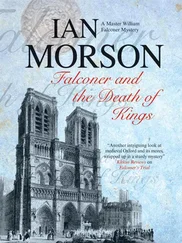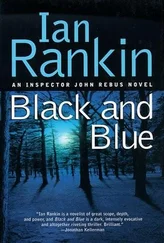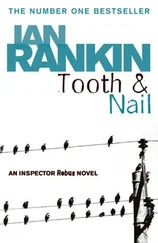Flowering usually takes place from May to July, although in mild winters a number of species develop flower-heads in December or even January. Annual meadow grass, on the other hand, can generally be seen in bloom throughout the year. The first grass to flower in the spring is holy grass ( Hierochloë odorata ), which is in bloom about the end of March, but this species is very rare in the British Isles, and is confined to three Scottish counties and one Irish. Meadow foxtail ( Alopecurus pratensis ) and sweet vernal grass may flower in April, the ryegrasses in May, cocksfoot and the fescues in June, and timothy in July. Woodland and mountain species are somewhat later in flowering than species of the same genera growing in more open habitats or at lower altitudes. The early-flowering grasses are usually those in which only a comparatively short day is required for flower initiation; the later are those needing a longer day.
Since the actual flowers of grasses are very simple and show comparatively little variation, classification and identification have to depend largely on the structure and arrangement of the spikelets. Each true flower consists only of a single pistil with (usually) two styles, and (usually) three stamens, plus, in most grasses, a pair of minute scales which are known as “lodicules” and which have been regarded as representing very reduced sepals. Each flower is protected by two much larger structures, the inner, usually two-keeled, palea and the round, single-keeled, lemma. The lemma and palea fit closely together over the flower and are only separated for a short time when the lodicules swell up temporarily, pressing them apart, and allowing the styles and stamens to protrude and wind-pollination to take place.
Each true flower plus its lemma and palea is known as a “floret” and the spikelet consists of from one to about twenty florets. At its base there are two (occasionally one or none) protective structures, the glumes. Both the lemmas and the glumes may be furnished with bristles (awns), which are useful features for identification.
The following key will enable the more important species to be identified in the flowering stage.
| 1 |
Inflorescence a spike; spikelets not stalked. |
2 |
|
Inflorescence a raceme. One very shortly-stalked,many-flowered spikelet at each node. |
Brachypodium spp. |
|
Inflorescence a panicle (spikelets on long or shortbranched stalks). |
7 |
| 2 |
Spike branched. |
Spartina spp. |
|
Spike not branched. |
3 |
| 3 |
One spikelet at each node. |
4 |
|
Two spikelets at each node. Spike large, spikeletsseveral-flowered. |
Elymus arenarius |
|
Three spikelets at each node. Spikelets one-flowered, central one only fertile. |
Hordeum spp. |
| 4 |
Spike one-sided; spikelets one-flowered. |
Nardus stricta |
|
Spike not one-sided; spikelets several-flowered. |
5 |
| 5 |
Spikelet placed edgewise; 1 glume only. |
6 |
|
Spikelet placed sideways on; 2 glumes. |
Agropyron repens |
|
(Wheat 3 or more large florets and broad glumes,lemmas usually awnless, and Rye with two large floretsand narrow glumes, lemmas always awned, come here) |
| 6 |
Lemmas awnless. |
Lolium perenne |
|
Lemmas awned. |
Lolium multiflorum |
| 7 |
Spikelets usually many-flowered (4 or more);glumes short, not hiding florets. |
8 |
|
Spikelets few-flowered (2–5 usually); glumes long,concealing at least the lower florets. |
19 |
|
Spikelets one-flowered; glumes long, concealingfloret. |
23 |
| 8 |
Panicle branches mainly spreading. |
9 |
|
Panicle branches very short, not spreading, so thatinflorescence looks more like spike. Sterileskeleton spikelets present as well as fertile. |
Cynosurus cristatus |
| 9 |
Lemmas with awn on back. |
10 |
|
Lemmas awnless or with awn on tip. |
11 |
| 10 |
Lemmas rounded, spikelet oval. |
Bromus mollis & related species |
|
Lemmas keeled, spikelet triangular. |
Bromus sterilis & related species |
| 11 |
Lemmas with rounded back. |
12 |
|
Lemmas keeled on back. |
16 |
| 12 |
Lemmas very blunt. |
13 |
|
Lemmas bluntly or sharply pointed or shortlyawned. |
14 |
| 13 |
Spikelets long, cylindrical. |
Glyceria fluitans |
|
Spikelets short, rounded-triangular. |
Briza media |
| 14 |
Panicle purple, usually long and slender, stigmaand anthers dark purple. |
Molinia caerulea |
|
Panicle green, becoming brown or yellowish.Stigma and anthers pale. |
15 |
| 15 |
Panicle and florets small. |
Festuca ovina & F. rubra |
|
Panicle and florets larger, two branches at mostnodes, with 1 or 2 spikelets on smaller branch,lemmas bluntly pointed. |
Festuea pratensis |
|
Panicle very large, 3 or more spikelets on smallerbranch, lemmas with awn-point. |
Festuca arundinacea |
| 16 |
Lemmas straight, bluntly pointed. |
17 |
|
Lemmas curved, with awn point, panicle largewith dense clumps of spikelets. |
Dactylis glomerata |
| 17 |
Panicle small, no “web.” |
Poa annua |
|
Panicle larger, “web” of cottony hairs at base oflemma. |
18 |
| 18 |
Spikelets rather small, panicle open, light andfeathery in appearance. |
Poa trivialis |
|
Spikelets slightly larger, panicle closer, denser andheavier in appearance. |
Poa pratensis |
| 19 |
Panicle branches mainly spreading. Spikelet erect. |
20 |
|
Panicle branches short, not spreading. Spikelet ofone shiny fertile floret and two sterile brownhairy awned lemmas. |
Anthoxanthum odoratum |
| 20 |
Spikelets two-flowered, one fertile, one male only. |
21 |
|
Spikelets with two or more fertile florets. |
22 |
| 21 |
Spikelets fairly large, lower floret male withprominent bent awn, upper floret fertile. |
Arrhenatherum elatius |
|
Spikelets small, lower floret fertile, upper floretmale with small fish-hook awn. |
Holcus lanatus |
|
( Holcus mollis similar but with more prominent bent awn) |
| 22 |
Panicle rather small, closing in fruit, yellow,spikelets 2–5 flowered. |
Trisetum flavescens |
|
( Helictotrichon spp. with larger spikelets would also come here) |
|
Panicle spreading, purplish-brown, branches wavy,spikelets small, two-flowered. |
Deschampsia flexuosa |
|
Panicle spreading, very large, often silvery, spikeletssmaller, two-flowered. |
Deschampsia caespitosa |
| 23 |
Panicle somewhat spreading, spikelets very small. |
24 |
|
Panicle always closed, densely cylindrical, spike-like. |
25 |
|
Panicle large, cylindrical, tapering, spikelets verylarge, (on sand dunes). |
Ammophila arenaria |
| 24 |
Panicle open in flower, closing in fruit. |
Agrostis stolonifera |
|
Panicle open throughout. |
Agrostis tenuis |
|
( Agrostis canina and A. gigantea would also come here) |
| 25 |
Glumes stiffly-pointed, floret short, unawned,threshing out when ripe. |
Phleum pratense |
|
Glumes blunt, joined at base, floret awned andenclosed by glumes. |
25 |
| 26 |
Panicle stout, spikelet oval, hairy. |
Alopecurus pratensis |
|
Panicle slender, spikelet oblong, not hairy. |
Alopecurus myosuroides |
Grasses show an amazing tolerance to external conditions. For instance sheep’s fescue, which grows down to sea level in this country, has also been recorded on the highest mountains in Britain and at nearly 18,000 ft. in the Himalayas. Then again, many grasses from low-lying habitats in temperate regions adapt themselves to high altitudes in tropical countries. Others survive wide differences of climate, the classic example of adaptability being perhaps sweet vernal grass, which flourishes from sea level to above the snow line, is equally at home on sand, loam or clay, and is found in many countries of the world with vastly different climates, ranging from North Africa to Siberia.












